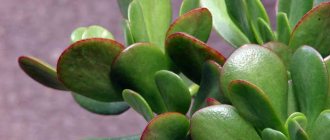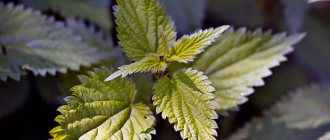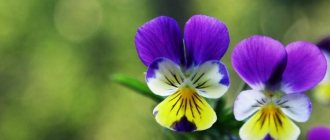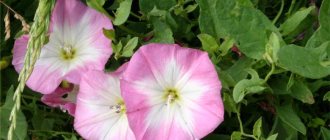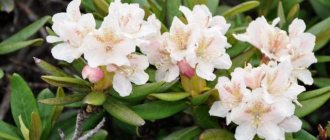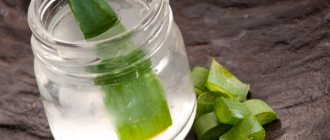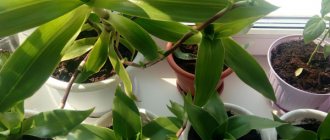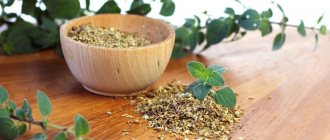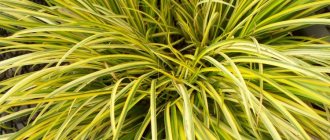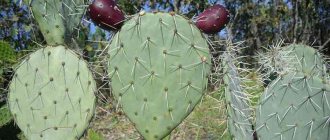This is a perennial herbaceous plant of the Crassulaceae family. Other names for Kalanchoe are bryophyllum, indoor ginseng, Goethe flower, tree of life, home healer, surgeon without a knife, etc. Some of its varieties grow well at home, delighting with beautiful flowers and providing healing assistance. The plant has a bacterial, anti-inflammatory, wound-healing and hemostatic effect. Its juice has a detrimental effect on polio and influenza viruses. Kalanchoe medicinal is successfully used in dentistry, surgery, gynecology, gastroenterology and dermatology.
Features of the plant
Succulents have many varieties and hybrid species. So you may come across both a woody plant and an ampel plant in the store. But the green friend will always have thick and juicy leaves of a pleasant green color. But their shape can be round, triangular, wavy, with small teeth and even even. There are species with edges, a waxy coating or speckled.
Home care
Kalanchoe will not require much effort from you to grow. It can go without water for a long time and does not require maintaining a certain temperature or humidity. In addition, it is a medicinal plant. So it will help in treatment at any time.
Location and lighting
Succulents need a lot of sun. It is only advisable to catch the morning and evening sun rays, and during the daytime either remove them from the windowsill altogether or shade them. You can place a flowerpot with a flower on the east or west window. In winter you can safely place it on a south-facing window sill. If you want Kalanchoe to bloom in the cold season, you will have to supplement it with light.
Temperature
The most favorable environment for a fleshy sprout is +17-19°C. But the flower can withstand a lot of coolness. The main thing is that the thermometer reading does not fall below +5-6 degrees.
It is desirable that the daytime temperature differs from the night temperature by several degrees. This is necessary for the formation of buds and better flowering.
But it is advisable to protect your pet from the heat. If the room is more than 20 degrees, the Kalanchoe will begin to absorb more liquid, and this can lead to rotting of the roots.
Watering
You should remember the main rule - it is better to underfill than to overfill Kalanchoe. The fleshy stems accumulate moisture, so the plant can survive without water for some time. And excess liquid can lead to the death of your green friend.
In summer, water when the substrate is one third dry, and in winter by 2/3, that is, almost completely. The water should be settled and cool. Pour in enough liquid to make the soil moist but not wet. In case of accidental overflow, be sure to drain the excess from the pan.
You need to water so that moisture does not fall on the leaves.
Air humidity
Kalanchoe, which does not like water, also reacts unfavorably to high humidity. The air in the room must be dry, otherwise it will rot and die. Only occasionally should you wash off the dust from the leaves.
The soil
For Kalanchoe, a purchased substrate for cacti or succulents is suitable. You can take universal soil, enriching it with expanded clay or perlite. You can collect the soil mixture yourself. You will need to take:
- 30% turf;
- 30% leaf soil;
- 30% river sand (coarse);
- 10% vermiculite.
Feeding and fertilizers
Kalanchoe does not need frequent feeding. It is enough to apply mineral fertilizer for succulents once a month. During flowering, you can fertilize it once a week, but in small portions. In winter, fertilizing should be stopped altogether. Make sure that there is some nitrogen in the composition, otherwise the bush may rot.
Transfer
A pot for Kalanchoe needs to be deep and wide, since the root system is not inferior in growth to the above-ground part. It is best to take a clay pot. The bottom of the container should be lined a quarter of the height with expanded clay or clay shards for better drainage. The diameter of the flowerpot should be 2-3 cm larger than the previous one.
The bush will have to be replanted every year in the spring, immediately after flowering. After removing the plant from an old pot with a small amount of soil, inspect the roots and get rid of any dried or rotten parts. Move to a new place of residence. In this case, the substrate must be identical to the old one. Place the bush so that the root collar is at the level of the soil mixture. And the upper edge of the flowerpot should protrude 2-3 cm above the soil. Add as much soil as needed and water the pet. Sprinkle a layer of pebbles on top. Adaptation to changing living conditions should take place within a week.
If you need to urgently replant a Kalanchoe during flowering, use the transshipment method. To do this, water the bush thoroughly, transfer it along with the earthen lump into another pot, and fill the remaining cavities with fresh soil.
Trimming
For the beauty of the bush, regular pruning and pinching is necessary. This should be done every spring or early summer after the plant has flowered. Particularly elongated shoots should be reduced by half or even two-thirds.
Those that are too bare will look unattractive, so it is better to cut them off to the base and root the top to form a new plant.
Benefits of Kalanchoe - 7 facts
Let's consider the main medicinal properties of Kalanchoe for our body (based on scientific sources of information).
Eliminates kidney stones
Indian experts claim that the aqueous extract of Kalanchoe has an anti-urolitic effect.
The plant prevents the formation of the most common type of stones (oxalates) in the lumen of the urinary system.
Thanks to its anti-inflammatory properties, Kalanchoe also reduces inflammatory changes caused by obstruction of the urinary ducts by stones.
In addition, the plant can alleviate urethritis, cystitis and pyelonephritis.
Kalanchoe can be used to prevent and alleviate urolithiasis.
Supports stomach health
According to Brazilian scientists, Kalanchoe has gastroprotective activity.
It reduces the acidity of gastric juice and also restores the bicarbonate layer near the mucous membrane, which prevents the irritating effects of hydrochloric acid.
The plant can be used for any chronic diseases of the gastrointestinal tract during exacerbation (GERD, gastritis, duodenitis, gastric and duodenal ulcers).
Kalanchoe is an excellent addition to the usual medications used for ulcers of the mucous membrane.
The healing plant protects the mucous membranes of the digestive system. It is effective during periods of exacerbation of chronic diseases.
Has anti-inflammatory and antioxidant properties
Kalanchoe is a valuable source of natural antioxidants for the human body.
The composition contains ferulic, caffeic, protocatechinic acids. These substances neutralize free radicals formed during oxidative stress. “Aggressive molecules” can cause cell damage, initiate the growth of malignant tumors and the emergence of chronic diseases.
When taking Kalanchoe, the concentration of key markers of inflammation in the blood - interleukins 1, 4 and 8, as well as tumor necrosis factor-alpha - decreases.
Taking the herb can reduce the likelihood of developing any chronic diseases (including obesity, diabetes, hypertension and gout).
Kalanchoe, thanks to antioxidants and anti-inflammatory substances in its composition, can protect against many chronic diseases.
Has a calming effect and improves sleep
Experts from the University of Basel (Switzerland) studied the effect of Kalanchoe on diseases with hyperactivity.
It was found that the plant improves the functioning of the central nervous system, relieves stress, anxiety, depression and various depressive disorders.
It also normalizes sleep (the time for going to bed is reduced, the depth of sleep increases).
Kalanchoe has been noted to be effective in cases of increased uterine tone and premature birth, and an overactive bladder (frequent urge to urinate in the absence of organic disorders). The pharmacological basis of the action of Kalanchoe in these disorders has not yet been studied.
The medicinal plant allows you to achieve psycho-emotional well-being during stress and depression, and improve sleep.
Supports prostate health in men
More than half of men over 50 years old are faced with such a problem as benign prostatic hyperplasia. The disease interferes with the quality of life (difficulty with urination and sex life).
Studies demonstrate the ability of Kalanchoe to reduce the size of the prostate and improve the excretion of urine from the body.
It has also been proven that the herb can reduce the likelihood of developing prostate cancer against the background of long-term prostatitis or prostate adenoma.
Kalanchoe alleviates symptoms of prostate adenoma and reduces the risk of developing malignant tumors of this organ.
Fights cancer
The antitumor activity of Kalanchoe has been proven. The plant is able to detect cancer cells and trigger the processes of apoptosis - programmed death - in them.
The herb not only limits the growth of cancer, but also prevents the appearance of distant foci of metastatic growth.
The effectiveness of Kalanchoe against tumors of the following organs has been confirmed:
- prostate;
- blood systems;
- lungs.
Some experts believe that Kalanchoe extract will in the future serve as the basis for the creation of antitumor drugs for certain forms of cancer in oncology.
Kalanchoe blocks the growth of tumor cells in the body, presumably reducing the risk of cancer.
Improves heart and vascular health
It has been proven that Kalanchoe extract causes vasodilation, which is accompanied by a decrease in high blood pressure.
The herb allows you to reduce the doses of medications taken for hypertension and prevent hypertensive crises.
Kalanchoe has a positive effect on lipid metabolism. It reduces the level of total and “atherogenic” (LDL) cholesterol in the blood and inhibits chronic inflammation in the walls of blood vessels.
As a result, the prerequisites are not created for the appearance of cholesterol plaques in the arteries and the development of such deadly diseases as coronary heart disease and myocardial infarction, chronic cerebral ischemia and stroke.
The plant is recommended for men and women of older age groups to reduce blood pressure, normalize cholesterol levels and prevent the development of cardiovascular disorders.
Kalanchoe lowers blood pressure and prevents the deposition of cholesterol in the walls of arteries, protecting a person from extremely dangerous diseases.
Bloom
From mid-October to early March, when daylight is short, Kalanchoe produces many flowers. To get flowering in the warm season, you will need to “deceive” the plant, imitating darkness. To do this, for six weeks, you should hide the flowerpot with a flower in an unlit place every day and keep it there for 14 hours, and keep it in daylight for only 10 hours. In this case, watering should be reduced by half.
For flowers to form en masse, it must be +7 degrees at night, and no more than 16 degrees during the day. Make sure that the thermometer does not drop to +4 degrees or below. This can be fatal for your pet.
Under such conditions, Kalanchoe will bloom in 5-7 weeks. Once the bush blooms, resume normal care. Dried flowers should be removed. This will stimulate the development of new ones.
If you took a pot of Kalanchoe outside for the summer, then return it back to the apartment without waiting for frost. After 3 months it should lose color.
When you bring a bush from the store, do not immediately place it in the sun. First, shade with a piece of fabric. After a few days, begin to remove the cover little by little, gradually increasing the intervals in the light. Otherwise, the plant may drop its flowers, since the store is usually dim, and watering is done quite often.
Flower meaning
The name Kalanchoe literally translates from Chinese as “what falls, grows.” It is also called the “tree of life”, “room doctor”, “homemade ginseng” due to its high content of nutrients, vitamins, trace elements and minerals.
Kalanchoe is unpretentious, consumes little water, and can grow in any conditions. Therefore, “Kalanchoe” means endurance, durability and strength. It is given to purposeful and persistent people who achieve success in any business.
In China, it is customary to give Kalanchoe in pots as gifts for Chinese New Year. This means that you wish the person prosperity, well-being and wealth.
According to signs, Kalanchoe absorbs negative energy and protects the family from gossip, quarrels and evil spirits. It charges the home atmosphere with calm, harmony, and comfort.
It is recommended to keep the flower in places where household members spend more time together.
Cut flowers mean affection. In a bouquet, their meaning depends on the color:
- Reds represent love, a strong and strong feeling;
- White and pink - innocence, sympathy, romance;
- Yellow and orange represent good humor and friendship;
- Purple and blue - quite rare - are universal. Using them in a wedding composition, they can highlight the color of the bride’s dress. They can be given as a compliment on the first date.
Reproduction
You can get new Kalanchoe plants in different ways:
- cuttings;
- leaves;
- seeds;
- children;
- kidneys;
- offspring.
You should choose a propagation method depending on the type of flower you grow.
Cuttings
You need to choose long shoots of at least 8-12 cm. Cuttings from apical shoots take root best. Rooting can be done in two ways:
- Cut off the cuttings and let them sit for 24 hours to dry. Remove the lower leaves. Moisten the soil in the pot and plant the cuttings in it. After 2-3 weeks it should take root.
- Prepare the cutting as described above. Then lower it into water so that half of the stem is in the liquid. The glass of water should not be in direct sunlight. When the roots appear after 2-3 weeks, you can transplant the sprout to a permanent place.
Leaves
Even a novice gardener can perform this procedure with consistent success. Cut the leaf and plant it in a well-moistened substrate. Cover the top with a glass jar. The roots should emerge within 3-4 days. After this, the plant will quickly grow.
For this purpose, you can even use fallen leaves if they have not dried out. You just need to root them in a glass of water. And after the roots appear, replant.
Seeds
This method should be used in the cool season. Sprinkle the seeds on top of the substrate without digging into the ground, just press lightly. Pour a trickle of water over the top to create a depression. Cover the top with a piece of cloth or glass. Avoid exposure to sunlight.
When the shoots appear, plant them in a box, covering the top with polyethylene. And only when 4-5 leaves are formed on the sprouts, plant them in small separate flowerpots. After a month, pinch off the tops. And then repeat this procedure after another 30 days. New plants should bloom in about a year.
Children
This method works best for pinnate Kalanchoes and Degremonas. It is in these species that babies are formed at the edges of the leaf edges, which have roots. Having matured, they fall off and take root in the soil mixture. All you have to do is wait until they have leaves and plant them in a container for rooting. When they gain strength, transplant them into separate flowerpots.
Axillary buds
Axillary buds appear in some species of Kalanchoe at the very hilum when the old leaf falls off. In appearance they look like small heads of cabbage. When it reaches 1-2 cm in height, trim it carefully and plant it in sandy soil. This will make it easier for the shoot to grow.
Offspring
After the Kalanchoe has finished flowering, pinch the apical shoot. Wait until new offspring appear next to the mother shoot. When they reach a third of the height of the mother bush, plant them in the substrate. Such sprouts take root well and grow quickly.
How to get maximum effect
This unique plant has truly healing powers. But like any medicine, it requires the right approach when used. If we take into account some cultural features, then regardless of the recipe, the healing power of Kalanchoe can almost double.
- Age of Kalanchoe. For medicinal purposes, it is not advisable to use Kalanchoe that is not yet two years old. A young plant cannot boast of a high content of useful components.
- Preparing the plant. The process of producing medicinal raw materials begins a week before cutting the leaves. Seven days before harvesting the Kalanchoe raw materials, they stop watering and fertilizing. The Kalanchoe pot should not be moved to another place or the temperature or lighting changed. Thanks to this, the greatest number of biologically active ingredients will accumulate in the leaves.
- Collection of raw materials. Traditional medicine recommends using the lower leaves of Kalanchoe to prepare medicinal potions. As studies show, they have the greatest healing power. Cut Kalanchoe raw materials are cleaned of dust with a regular napkin. It is strictly forbidden to wash the leaves with water.
- Kalanchoe extract. The mechanism of accumulation of useful substances in Kalanchoe has not been thoroughly studied. But practice shows that in aged raw materials the amount of medicinal components doubles. To do this, cut leaves are wrapped in natural fabric and placed in a cellar or refrigerator for ten days.
- Making juice. Most often, medicinal recipes require the use of Kalanchoe juice. Therefore, the aged leaves are taken out of the cellar and carefully crushed. The juice is squeezed out of the pulp. It is not recommended to use metal to prepare preparations from Kalanchoe. Kalanchoe normally comes into contact with wooden and glassware, and when in contact with metal products it quickly oxidizes.
The duration of treatment for Kalanchoe, if used internally, can be 14 days. In case of serious pathologies, therapy may be delayed for a longer period. Therefore, it is better to discuss the course of treatment, as well as the dosage, with your doctor.
Diseases and pests
Like any other indoor plants, Kalanchoe can be attacked by parasites.
- Aphid. You can get rid of small dark green insects by treating the bush with potassium soap. Too severely affected areas will have to be removed.
- Shield. Gray plaque should first be treated with an alcohol solution, then brush off the insects. Then repeat the alcohol treatment.
- Rot. If you find brown spots, stop watering for a while and partially replace the earthen ball. Then start watering with fungicides.
- Powdery mildew. White plaque appears due to too high air temperature. You will have to spray the bush with a fungicide solution.
- Gray rot. If you find weeping gray spots, you should partially replace the soil, treat the plant with a fungicide and move it closer to the light.
Care errors
If you care for Kalanchoe incorrectly, certain problems may arise:
- The bush doesn't bloom. This may be a consequence of too much fertilizer or too much daylight.
- The leaves curl. The cause may be thrips or leaf rollers. The bush needs to be treated with insecticides or miticide.
- Brown spots on leaves. Appear from excess ultraviolet radiation. Reduce daylight hours for your pet.
- Black spots on leaf blades. They provoke fungal diseases. The temperature in the room should be increased and the humidity reduced.
- Leaves are falling. Move the flowerpot away from the radiator or other heating source.
- The leaves turn yellow and dry out. Due to improper lighting.
- Withering of a flower after flowering. Urgent feeding or replanting is required.
Morphological description
Kalanchoe pinnate
It can reach a height of up to 2 m, has a strong, fleshy stem, tree-like below. On the stem opposite each other are petioled leaves, slightly pubescent with hairs, having a round shape and a glossy surface. Often, leaf buds are formed in the recesses of the teeth, which are intended for vegetative propagation.
The plant blooms irregularly and not strongly; flowering often occurs in the cold period of the year. The inflorescences are axillary panicles: large bisexual flowers sit on the pedicels. Each Kalanchoe flower is the basis of 4 fruit-boxes, which are surrounded by the remains of a corolla. The seeds are small, oval.
Kalanchoe Degremona
This is a popular variety of the genus, the peculiarity of which is the presence of children located on the edges of the leaves. The babies fall off the leaves very easily and quickly take root. The crop is not tall, up to 50 cm, the stems most often creep, so they need support. The leaves are oblong, pointed, dark green. Flowering occurs in winter - the flowers are bell-shaped, large, pink-violet in color.
Kalanchoe Blossfeld
This is a popular plant with numerous bare, weakly branched stems. The height of the plant reaches up to 30 cm. The leaves are round or ovoid in shape, green or dark green in color. Sometimes there is a red border along the edge of the leaf. It blooms for a long time, from the beginning of winter to the beginning of summer. Flowers of dark red, pink, yellow or orange reach a diameter of up to 1 cm, collected in inflorescences in the shape of brushes.
Folk signs
Kalanchoe is suitable for breeding for energetic and purposeful people. This is the kind of flower that will be conducive to achieving success and conquering new heights.
But for those who suffer from indecision, it would be useful to place a flowerpot with a succulent in their home. This will help you gain confidence in your abilities.
If you have problems in your family life, place a pot of flowers on the windowsill, and your feelings with your spouse will get a second wind. And for unmarried people, the fleshy leaves will help attract a groom.
If you notice that the Kalanchoe has begun to fade, you should know that damage has been caused to you or your home.
Making a tincture
Kalanchoe tincture with vodka is not widely used. But to treat some ailments, healers advise resorting to this particular remedy. Sometimes it is recommended to combat inflammation in the oral cavity. But it should be remembered that such treatment is unacceptable for children, since the product contains alcohol.
Preparation
- Kalanchoe leaves are cut into small pieces.
- The raw materials are placed in a half-liter jar, filling half the volume.
- Top the mixture with high-quality vodka to the brim of the jar.
- Leave the product for ten days, remembering to shake it periodically.
- The mixture is then filtered. Store the finished medicine in the refrigerator.
How to use
The tincture is useful for rheumatism, gout, arthritis, radiculitis and many other pathologies of the musculoskeletal system, as well as varicose veins, but only as local therapy. The tincture is taken internally for prostatitis.
- Joint diseases. It is recommended to rub the affected joints with an alcohol tincture of Kalanchoe. This will reduce the severity of inflammation and relieve pain.
- Varicose veins It is recommended to use the tincture for rubbing the feet at the stage of spider veins appearing on the skin. In this case, therapy will be more successful. Rubbing begins near the feet and carefully moves up to the knees. In case of varicose veins, it is prohibited to press on the affected vessels. The duration of treatment can last up to four months.
- Prostatitis. To defeat prostatitis, internal administration of the drug is recommended. Men are prescribed one teaspoon of tincture 20 minutes before meals twice a day. Continue therapy for two weeks and take a break for 14 days. Then they resume the course again.
Kalanchoe tincture with alcohol is strictly contraindicated for people suffering from liver diseases and patients prone to alcoholism. It is better for such individuals to consider treatment with water infusion or juice.
Medicinal properties
The juice of the fleshy leaves of Kalanchoe is used for external use both in official medicine and at home. Lotions and compresses made from it can be used in the following cases:
- boils;
- trophic ulcers;
- non-healing wounds;
- cracked nipples;
- sunburn.
For a runny nose, it is recommended to apply drops into the nose of adults and children.
In addition, the plant is able to kill harmful microbes floating in the air. So it wouldn’t hurt to place a pot of succulents in each room.
As you already understand, growing Kalanchoe is not difficult. The flower will not require special care from you. But it will always delight you with its beautiful flowering and beneficial properties.
Indications for use
It is the rich composition that determines the medicinal properties of Kalanchoe. The plant can be safely classified as a natural “doping”, because its biologically active components strengthen the body’s resistance to negative external factors and stimulate the immune system. The following medicinal properties of the Kalanchoe flower are distinguished:
- blood purification;
- elimination of inflammation;
- stimulation of immunity;
- getting rid of bacteria;
- removal of toxins;
- tissue regeneration and wound healing;
- pain relief.
It is for the antibacterial properties and the ability of the plant to restore the body that Kalanchoe is popularly nicknamed “homemade ginseng.” The plant is used for local therapy, but it can also be consumed orally. Kalanchoe can fight a wide variety of ailments. Doctors give the following indications for use:
The type species of the genus Kalanchoe is Kalanchoe laciniata. Botanical illustration from Francisco Manuel Blanco's Flora de Filipinas, 1880-1883.
- colds;
- conjunctivitis;
- gingivitis, stomatitis, periodontal disease;
- tonsillitis, tonsillitis, adenoids, otitis, runny nose, cough;
- tuberculosis;
- pustular inflammation, acne;
- varicose veins;
- joint pathologies;
- ulcers, gastritis;
- prostatitis, adenoma;
- mastitis, erosion;
- eczema, psoriasis, erysipelas;
- cuts, skin ulcers, burns, necrosis.
Despite the impressive list of beneficial properties, the use of Kalanchoe is allowed only after consultation with the attending physician. Otherwise, the medicinal crop can cause serious harm.
